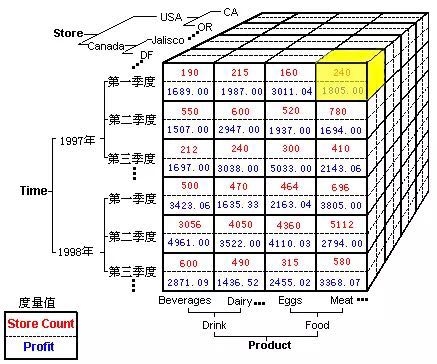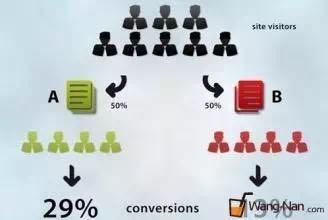Lei Feng network press: The author of this article Bei Ming Hai Sheng, from the public number calculated advertising (ID: Comp_Ad)

As the saying goes, "The wine is not afraid of the deep alley"; the saying goes, "The wine is also afraid of the deep alley." Later, as the saying goes, it doesn't matter if the wine is not deep in the alley. If you look for an abacus, the accountant, the data scientist, the wine can be sold. This is called data-driven user growth. The jargon is called "Growth Hacking."
The first time I heard of the word "Growth Hacking" was at a big data conference last year. (I specifically forgot to forget that because all the conferences are now called big data conferences.) When I was ready to stage a discordant speech with full of negative energy, I suddenly discovered that a former Facebook engineer was talking How to use data analysis to drive the "Growth Hacking" of user products.
Actually, the engineer’s speech was very pertinent. He did not publicize the data as a panacea. He also seemed to have deliberately emphasized that only by improving the product can the retention rate be improved . However, after this incident was transformed, people in the Internet community began to believe that data analysis is a magic weapon for product success. As it was advertised in street newspapers many years ago, acupuncture points can increase the number of breasts. As a coder who has dealt with data for so many years, if you have anything to say on this issue, you will be stuck in the throat. Today we come to talk, data analysis can really drive the rapid growth of user products?
For the Chinese market where data awareness and methods are between the Jurassic and the Cretaceous, emphasizing the role of data is generally of enlightening significance. Looking at the data is always better than simply using Caishen, but then again, the data is really not a God of Wealth. It does not mean that if you believe him, you will have eternal life. The sage has a cloud. "Whatever the number is, it's better than countless." In the end, data operations are useful in those scenarios. How can we make it useful? This is a question that high-quality readers of the public need to make clear.
| The three axes of data operationWith regard to data-driven operation growth, there have been many related books and lectures recently. In fact, the roads here are not mysterious. Most of the scenes of data operations can be summarized as the following three methods:
First, establish a user conversion funnelThe so-called user conversion funnel is how your business cheated a user step by step. Give a few examples of the following; you can see at a glance:
Advertising: Display -> Click -> Conversion
Games: Download -> Activate -> Save -> Pay
Sister: Shake -> Dating -> Hold Hands -> Kiss -> Go to bed
No matter what kind of business above, it can be decomposed into a series of stages. After each stage, only a part of the users remains. Accurately recording data for each link of the funnel to analyze and optimize the pass ratio of each link is the infrastructure for data operations.
Second, use multi-dimensional data reports to find problemsThe common pain point in data operations is to know that the pass rate of a certain link on the conversion funnel is low, but no way can be found. The commonly used solution is to scrutinize the data and separate it into observations in each dimension. This often leads to problems with the product or system. If multiple dimensions can flexibly combine observation data, it becomes a data cube. Although the following diagram is not related to the funnel data of Internet product operation, the principle is the same.

For example, if you find that your ad's clickthrough rate is low and you find that the click rate on the Chrome browser is lowering the overall statistics, you need to investigate the reason on the Chrome browser. The result is likely to be that your Flash creative is directly Chrome is blocked.
This method of locating and finding problems with multidimensional data reports is quite effective. It is actually an efficient debug, and it is still a kind of "accepted" strategy.
Third, use A/B test to guide product evolution
So is there a data-driven "attack" strategy? Of course, there are also possible ways to make improvements to multiple products, put them online, and let the actual data determine who is going. This method of A/B testing is often based on the idea that everyone can ideally lay out the magic of a good product, and it is also one of the foundations of the theory of “number of winnersâ€.
Speaking of A/B's system framework is not a simple matter. How to establish an experimental framework with both accuracy and efficiency is worth writing a separate long article. We will not talk about it here.

The above three axes are very important for operating a good product. However, if you think that you have mastered such data thinking, you can rely on data analysis to make great products.
| Data Operations Cannot Solve ProblemsHow a user chooses and evaluates a product has very different rules in different areas. In simple terms, we can divide products into rational products and perceptual products. For example, category 3C e-commerce is a more typical rational product, while apparel e-commerce is a relative emotional product. Computational advertising and recommendation systems, although the technology stack has similarities, but the former is a rational product, the latter's sensibility is much stronger.
For rational products, data is one of the most critical optimization methods because the goal of the problem is stable and easy to quantify. In terms of advertising products, advertisers use it for the purpose of obtaining higher profits (of course, this profit may be long-term or short-term) rather than to obtain spiritual pleasure or pleasure. Therefore, when the input-output ratio of the two advertising platforms differs greatly, the customer does not consider which of the user experience is superior, but he does not hesitate to choose the one that makes more money.
But when it comes to emotional products, it is far from simple. I remember that when WeChat got hot, a large wave of Internet analysts who had been diverted from line to line had spouted Lotus to analyze why WeChat is the final product of human socialization. Why are people still using QQ? By. However, last year, about the same dial analyst, but also in succession to discuss why the user group after 90 is being transferred to the mobile QQ WeChat. So is QQ or WeChat good? Such problems have different answers at different times and in different user situations, and it is impossible for us to give a universal quantitative target for such mobile IM products. In the operation of perceptual products, since it is difficult to give a certain optimization goal, the role of data optimization is to have a ceiling.
So, under what circumstances will data-based operations encounter significant bottlenecks? Generally speaking, there are the following aspects.
First, the direction of product innovation can not be obtained through data
A few years ago, there was a very hot gaming company called Zynga. It is said that Zynga's boss does not encourage innovation, but rather pursues "acquisitionism," copying other people's game ideas, and quickly surpassing his opponents with his own set of data operations systems. What kind of data operating system? To put it plainly, there is a lot of A/B testing. The design says: The grass is green. The product manager said: No, the green red data has the final say! So, they really divided traffic into red grassland and green grass. If the data shows that the users of Red Grassland are paying a high price, then the grassland will be completely red, and the botanists will go to hell! With such a system, Zynga once dominated the top three rankings on Facebook for a long time. What happened later? The answer is clear - who else knows Zynga now?

Of course there are many reasons for the decline of Zynga, but I have to say that only the data theory of product operation is also one of the promoters: your data test system will be mature, but it will also be able to engage in grass carving, green, green, and other techniques, and the game's new The true direction of innovation in terms of patterns, new scenarios, and new designs is not that you have a data operating system, you can't even judge through a data system. Take the iPhone for example. Big screen interactions, Multi-touch, and app stores are all great features of the product. They all come from Steve Jobs' beliefs and insights about the product, not the results of market and demand research.
Even if it is a short-term product improvement, relying entirely on A/B testing will not work. We can pick out the better A program based on the data, but if your alternative is only X/Y/Z, then how can A be measured? Someone asked: If you list all possible product options, let the data be selected? Product operation is not playing mahjong. There are always several combinations of those brands. The products that can really have potential need product managers with systemic and innovative thinking to spend time on coffee and toilets. It is possible to find it. Besides, even if the product points are clearly listed like mahjong tiles, when the product factors and directions become too much, due to the presence of “dimension curseâ€, we cannot accumulate enough statistical data to make decisions within a limited time. of.
In fact, the most important growth driver for user products has already been mentioned here. It is the insight and creativity of product managers.
Second, long-term user feedback is difficult to judge through data
The Facebook engineer mentioned a vivid example in his speech: Facebook has for many years insisted on adopting a rigorous A/B testing framework to decide whether a new feature is adopted by online systems. However, what is the result? He said that in fact, the homepage of the Facebook PC version has not had any major upgrades for three years. In fact, this result is thought-provoking: Has Facebook become the end product of human social networks, and has been optimized to the best of the world, can not be improved?
The conclusion is obviously not the case. I even think that in the many revision plans that were abandoned in those three years, the version that was not necessarily manslaughtered: the current A/B testing framework can only observe data in a relatively short period of time. Performance, but long-term trends and conclusions, if you do not insist on product beliefs, it is difficult to wait until the day of flowering.
I heard a rule from the traditional paper media magazine: In general, magazines were buzzing in the first few months after the revision. Then a few months later, the new version may bring about a significant increase in circulation. This can also be used as a proof of short-term data defects.

Third, the game scene can not use data to make decisions
Game-type scenarios are common in Internet products. For example, you may know that there is an issue of Explore & Exploit in Internet products. That is, some relatively random traffic is used to explore the unknown space, and the other part is based on statistically optimal decisions. Friends who are familiar with this field know that if we have two E&E strategies, we cannot determine their strengths and weaknesses through A/B testing. As for why, it is recommended that you self-conclude the E&E background knowledge.
In addition to E&E, there are many other game-like scenarios, such as the mechanism design problem in advertisements (that is, how the rules of the bidding market are set); for example, there are certain social game operation strategies that cannot be easily separated from the principle. Traffic can be effectively A/B tested.

Of course, understanding these game-related issues requires in-depth product insights and macro-thinking capabilities. There are many product managers pursuing swift and rapturous behavior. They would rather pretend that such problems do not exist.
| Users rely on the rapid growth in the end?Although this accountant is indispensable, the data is not the pinnacle of user growth. So, what can be achieved by the rapid growth of users who can really drive a product? From historically successful products, the following ideas are worth noting:
First, make a truly outstanding product
To put it bluntly, the key to the rapid growth of users is to do everything possible to produce a good wine. Good products are really good. This is the fundamental thing that all products and operations should pursue. Due to the problems of some data systems mentioned above, the intuition and judgment of a good product manager may not be consistent with the short-term data performance. At such a fork, it is more reasonable to insist on the principle of product principles first and data feedback second.
It needs to be specially stated that truly outstanding products are generally not based on the analysis of the stock market, so there is no ready-made statistical data to support. The recent rapid growth of Pokeman Go's rapid growth in users is embarrassing, but I don't think it has established a complete data operating system. Even if it does, it is not the key to its user growth.
The rapid user growth of almost all great products comes from the endogenous power of "good products", such as Google, Facebook, iPhone, and so on.
Second, find a strategic promotion channel
What is a strategic promotion channel? In short, it is those channels that are "cheap, affordable". The rapid growth of users of many products on the Internet is often enough to make this point.
For example, the rise of a cross-border e-commerce has a lot to do with the strategic purchase of traffic from Facebook in the early stages. And today. Facebook's advertising prices have been pushed up a lot, this channel opportunity does not exist.
In China, many non-BAT mobile internet products are growing rapidly, and most rely on this strategic channel. Manufacturers have pre-installed, operators have pre-installed, program providers also have pre-installed. Many products that have actively spent money when the pre-installed cost was only one-fifth of the current year have grown into large companies today.
Maintaining a keen sense of importance for undervalued strategic channels is critical to rapid product growth.
Third, the use of viral means of transmission
There are two types of viral transmission methods. One is infection, and the other is MLM.
The so-called infection is induced and bundled installation: through a product that already has a large installed capacity, through the use of coercive incentives or even secret operations, the other product is also brought to the user's terminal, often faster and better. A good way. Even at ordinary times, advertising agencies have done a good job. For example, when they are on mobile or on various security products, they often directly intimidate the user when your ad is running. “Your phone has too low memory†or “your phone risk. "Large", the user felt a tight chrysanthemum, and it was installed.
MLM is no stranger to everyone. After the emergence of social networks, MLM promotion programs are more convenient to implement. All sorts of different modes of teamwork, forwarding lottery mode, although it cannot be said to be a MLM in the strict sense, its essence is to mobilize the masses to fight against the masses. If such a method is used, there must be a miraculous effect and who knows who to use.
Fourth, build a brand of user awareness
The understanding of the importance of this point in the Internet community is inadequate. Products must stand upright, and maintaining the lying posture like Grandpa can also make money. The core user knowledge is critical.
In the Internet community, people tend to spread their message to the creed with direct results, but they have not paid enough attention to brand building. However, the success trajectory of companies such as oppo has recently led us to re-examine the role of brand and user perception. In my opinion, the user growth brought about by successful brand building may be rapid and healthy.
Having said so much, it does not mean that data-based operations are not important, but that in order to achieve rapid product growth, there are actually more important things. Today's Internet practitioners must not only master the correct data management methodologies, but should not blindly become worshippers. Doing a good applause and calling a product, although the data operation is indispensable, but still need to put the core energy to the "make a good wine" and "move to the alley" these two key points.
Lei Feng Network (search "Lei Feng Network" public concern) Note: Reprinted, please contact the authorization, and retain the source and author, not to delete the content.
Brushless DC Motor,DC Brushless Motor,24V DC Brushless Motor,High Torque Brushless Motor
Changzhou Sherry International Trading Co., Ltd. , https://www.sherry-motor.com